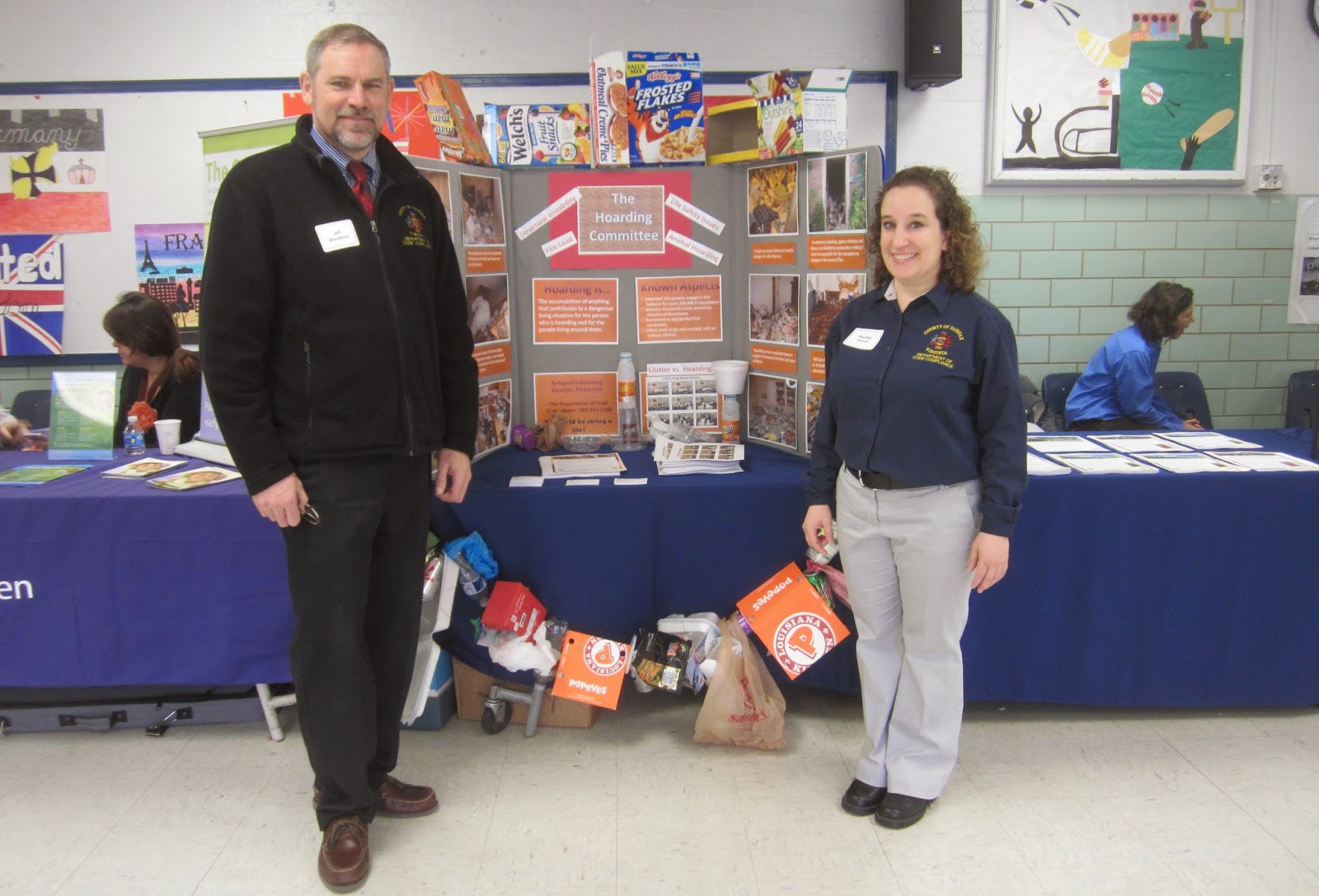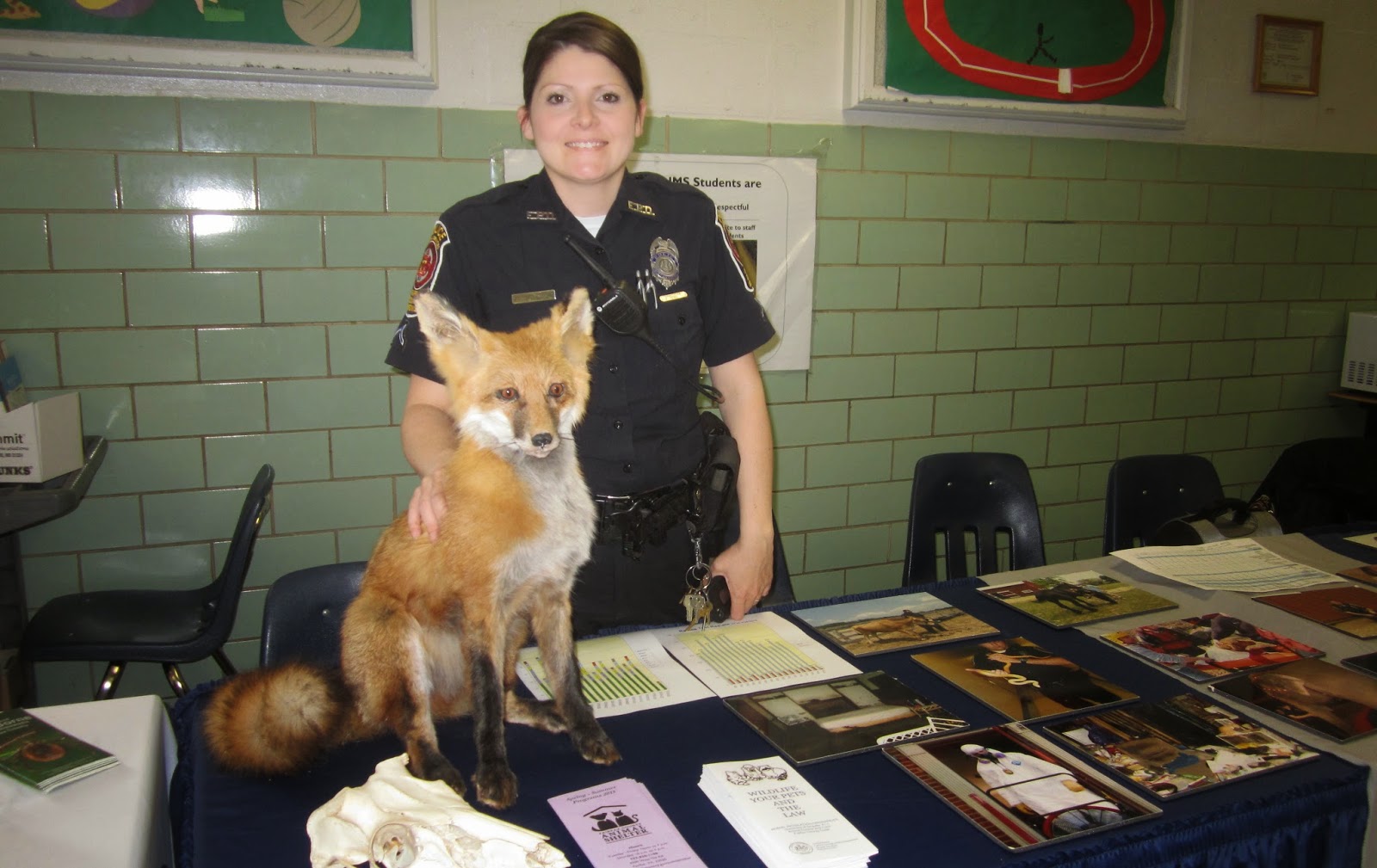Fairfax County officials educate neighborhood leaders
 |
| Jeff Blackford, director of the Department of Code Compliance, and Rachel Perrott of the DCC. |
About 300 or so local residents – including many civic
association and homeowner association board members – attended Fairfax County’s first-ever Neighborhood
and Community Leaders Conference March 22 at Luther Jackson Middle School.
building codes and other regulations. “Life safety is our top priority,” said Cat Lunsford.
A household is considered in violation of the multiple
occupancy rules if there are more than one family related by blood or marriage
plus two unrelated people or there are more than four unrelated roommates. When it comes to multiple dwellings in a house, 99 percent
of the time, a basement apartment is not legal, Lunsford said.
front yard. A resident can have a storage shed up to 10 by 10 feet in the back yard if
it is screened from view. Up to two inoperable vehicles are allowed if there are no
other violations.
districts, although there are exceptions for low-impact services like a piano
teacher, in which case a home occupational permit is required.
kitchen or bathroom, removing interior walls, adding or demolishing a swimming
pool, enclosing a carport, adding a retaining wall, and replacing a gas
appliance. The permit must be posted on the outside of the house.
including electrical and plumbing hazards. If plumbing is done incorrectly,
sewer gases can come into a home.
extension cords, and gas for tools stored inside a house, need to be fixed
immediately, said Peggy Delean of DCC. For other building code violations, homeowners are
given a year to comply; if the problem still isn’t fixed, it goes to litigation.
services can’t get in. Filling one’s home with junk isn’t against the law, Delean
said, but there must be a three-foot wide pathway through the house.
worst,” she said. DCC tries to work with the owner to fix the problems, but if that
doesn’t work out, there’s a lengthy process resulting in the county demolishing
the structure and billing the owner.
waste and does not enforce a homeowner association’s rules. Complaints about
loud parties, barking dogs, graffiti, and inoperable or unregistered vehicles
in the street are handled by the Police Department, not DCC.
703-324-1300. The history of complaints can be searched online. People who file a complaint against a neighbor remain
anonymous, even though they should give their names and phone numbers so code
inspectors can follow up with them. If someone files a Freedom of Information
Act request for code violation documents, the name of the complainer is blacked
out, Lunsford said.
property. It’s rare for an occupant to refuse to let an inspector inside,
Delean says; if that happens, the inspector could get a warrant.
filed the complaint will be notified. If there is a violation, the owner is usually
given 30 days to fix the problem, although fire hazards have to be fixed
immediately.The owner could be given additional extensions if progress
is being made. Ultimately, the issue could go to litigation, which Delean says
is expensive and time consuming.
 |
| Animal Control Officer Jessica McLemore, one of many Fairfax County officials who set up information tables in the Luther Jackson Middle School cafeteria during the conference. |
leaders of community associations and HOAs can bring residents
together.
electronic newsletters and websites are good, but “personal face-to-face
contact is extremely important.” She visits all new residents, bringing a
packet of information, including the neighborhood phone directory, list of
nearby shopping places, and a guide to the HOA covenants.
people about traffic problems – a community yard sale, cleanup day, and social
activities.
communities to set up a free online network with Nextdoor.com. It’s a great way
to sell furniture, find a babysitter, or share information about crime and
other issues.
of the Braddock District Council of Community Associations, said one of the
biggest issues on the County Club View neighborhood’s Nextdoor network was
whether a large animal residents had seen was a coyote, wolf, or large fox.
hard it is to get residents to volunteer. People are busy and apathetic and
only seem to get involved when there’s a conflict.
together. County Club View brought in a large dumpster for “dumpster day” and
invited people to dispose of their unwanted stuff. Green Trails brought Goodwill to a community yard sale, so people could donate their stuff right there
if it didn’t sell.
parking and traffic control; road maintenance; the role of the police in
keeping communities safe; Department of Neighborhood and Community Services
programs; and community connectedness, including the neighbor-to-neighbor
approach to help people comply with county rules and the village concept for
helping elderly residents stay in their homes.


Thank you to Mason District Council of Community Associations – for asking for this. Hope they continue to do this for the community.
Did they have pizza?
No pizza at the meeting. They took food requests and sent one of the audience members to McDonalds to order off the dollar menu.
Good mix in attendance. Half Code Compliance personnel and half community leaders.
I hope you are joking about the McDonald's run, although after the pizza fiasco, I can believe it. If this is true we should all pack up and move.
As the article briefly mentions, it was citizens as much as officials who were doing the educating here. There was also a VDOT official present who spoke on roads.